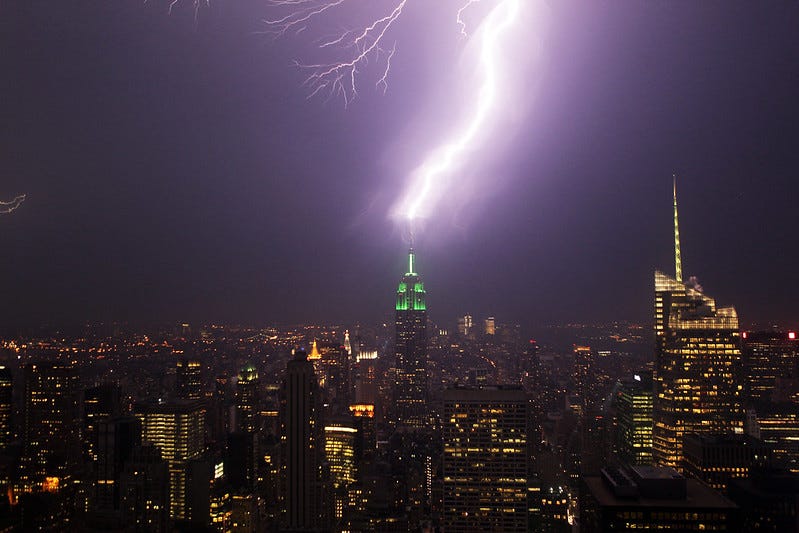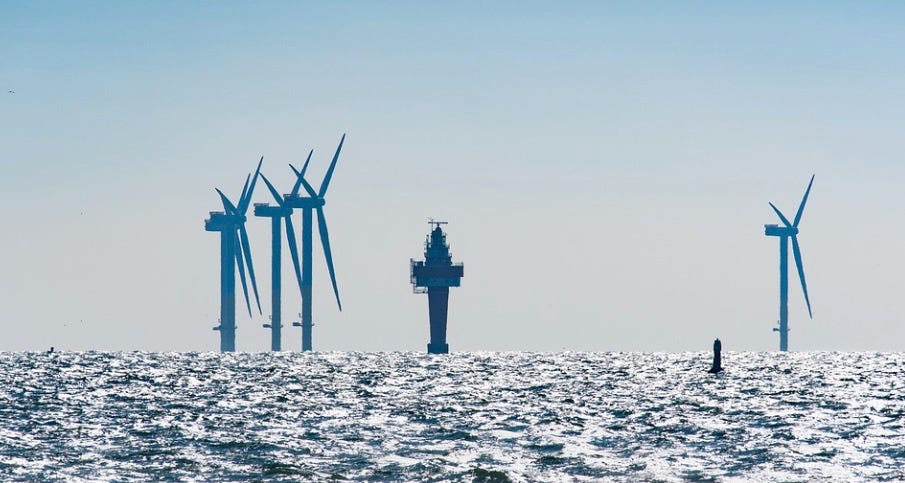Biden climate law, under fire from opposition, hits new growth milestones
Welcome to Callaway Climate Insights. Especially to our new subscribers during a rocky October. Please enjoy, and share with your colleagues.
Today’s edition is free. To read our insights and support our great climate finance journalism five days a week, subscribe now for full access.
Energy investment flows: Investment flows are shifting the world toward a more electrified, renewables-rich energy system, according to the IEA. Five years ago, for $1 invested in fossil fuels, the same went to clean energy. Today, for every dollar invested in fossil fuels, $1.80 is going to clean energy. Read more in the IEA’s World Energy Outlook 2023.
Even as President Joe Biden’s climate law takes new fire from Republican lawmakers in the House, jobs growth and investment from the more than 200 projects announced since the Inflation Reduction Act was passed last year are hitting new milestones.
An analysis by BloombergNEF this week said that more than $100 billion has been invested in the projects in the last year, particularly in those associated with electric vehicles and electric battery innovation. A separate report by Environmental Entrepreneurs, a research group called E2, estimates that construction jobs and associated businesses from building many of the new renewable energy plants tied to the projects will create more than 400,000 new jobs over the next few years.
Amid the turmoil of the latest Middle East crisis and a brutal bear market, the government has struggled to attract voter attention to the economic benefits from its climate strategies over the past several months. Republican Speaker of the House Mike Johnson (R-La.) almost immediately launched legislation to slash the IRA after being named speaker last week, and the issue of benefits vs. costs is certain to play a role in election strategies next year.
Rising supply chain costs continue to threaten capital-intensive projects, particularly in the offshore wind space, and make it harder to see the value in some of the federal subsidies that are spurring the renewable projects. As the rate cycle turns, however, those benefits and the jobs tied to them will become more clear on an everyday level.
Whether that is in time for the presidential election next year remains to be seen, but it’s worth noting that despite the apocalyptic headlines this autumn, an overlooked industry continues to churn to life. . . .
Don’t forget to contact me directly if you have suggestions or ideas at dcallaway@callawayclimateinsights.com.
Follow us . . . .
Twitter | LinkedIn | Facebook | Instagram
Brazil caught in climate Catch-22 as global agriculture crisis threatens

. . . . Brazil, which relies on agriculture more than most countries to feed its people and export, is caught in a vicious circle of environmental ambition and agricultural turmoil, writes Michael Molinski. One flashpoint is around the country’s need to import potash for fertilizer, which it needs to grow its crops. Because of supply chain issues and Russia’s invasion of Ukraine, fertilizer prices have doubled in the past year, leaving Brazil looking to its own mining operations to produce potash for its goods. But environmental concerns, particularly around the rights of indigenous peoples, have halted development at Brazil Potash, the country’s largest potash project. The standstill has left the government in a bind, with environmental concerns looking to lose out. . . .
Thursday’s subscriber insights
How a tempest of troubles came together to ravage the U.S.'s offshore wind industry
. . . . The U.S. offshore wind industry is in serious turmoil. Orsted has canceled its two projects off New Jersey. Orsted, BP BP 0.00%↑ and Equinor EQNR 0.00%↑ have taken huge write-downs on their offshore investments. And New England’s Eversource utility is in financial straits over its offshore involvement. What is going wrong in an industry that was all gung-ho just a year or two ago? Read more here. . . .
When tackling global warming makes it warmer
. . . . Here’s one you may not have thought of. If you reduce pollution more sun gets through and heats up the planet. One possible solution: blasting sun-blocking chemicals into the atmosphere. Read more here. . . .
Editor’s picks: Sailing the ocean green; plus, Pope will attend COP28
Watch the video: Computer models of climate change have long predicted that the ocean would turn green as a result of warming. But the change can't be seen by the human eye, so scientists weren’t sure how they’d measure this effect — until it turned out NASA’s MODIS-Aqua satellite had the data they needed all along. Watch this special report from SciShow.
Pope plans to attend COP28
Pope Francis says he will attend COP28, the UN climate summit that’s scheduled to begin Nov. 30 in Dubai. It would be the first time a pontiff attended one of the annual climate conferences since they began in 1995. A report from Reuters says the pope is expected to emphasize his recent call to action to address global warming. “We are still in time to stop it,” Francis said in an interview with Italy’s state-run RAI television TG1 news. “Our future is at stake, the future of our children and our grandchildren. A bit of responsibility is needed.”
Latest findings: New research, studies and projects

Market reaction: extreme weather and the electricity sector
The authors of Market Reaction to Extreme Weather Events in the Electricity Sector investigate the market reaction to extreme weather events, more prevalent over time, due to climate change. They focus on the European electricity companies, which have a diversified and geographically distributed portfolio of power plants, potentially exposed to various extreme weather events. From the abstract: “When an extreme weather event affects a power plant, investors respond negatively. Moreover, market response becomes less negative for companies with higher share of women in the board, and higher ESG scores. The results demonstrate that the market incorporates information on extreme weather events and provide guidance on the company characteristics that mitigate the reaction.” Authors: Roberto Bianchini, Polytechnic University of Milan Department of Management, Economics and Industrial Engineering; Bocconi University - BAFFI Center on International Markets, Money, and Regulation; and Vincenzo Butticè, Politecnico de Milano
More of the latest research:
Words to live by . . . .
“For a minute there, I lost myself.” — Radiohead.





